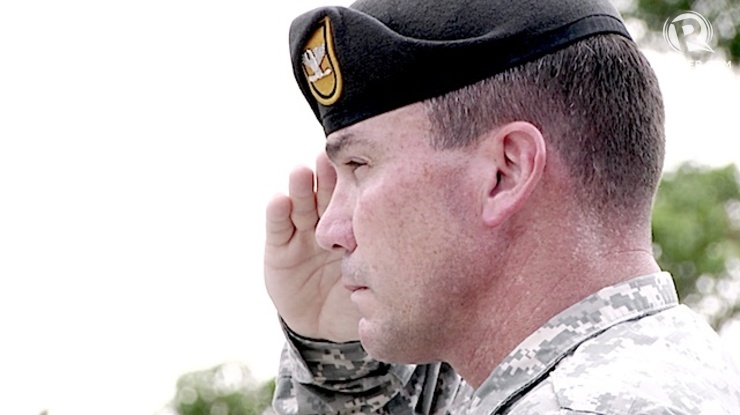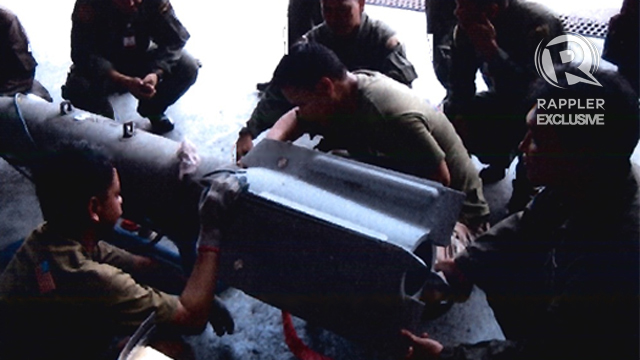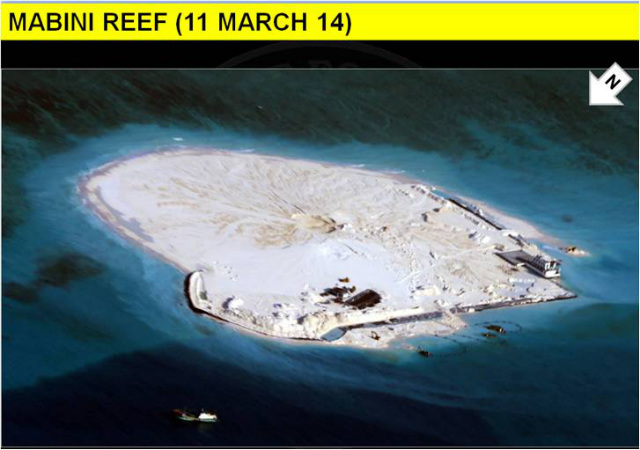From Rappler (May 15):
Old letter of US envoy details US pledge to defend West PH Sea
It's the turn of the members of the House of Representatives to ask questions about the PH-US Enhanced Defense Cooperation Agreement
What good is the
Enhanced Defense Cooperation Agreement (EDCA) if there is no categorical
statement from the US that
once the disputed territories in the West
Philippines Sea
(South China Sea) come under attack, Washington
will come to the defense of the Philippines?
The House of
Representatives committee hearing on the Enhanced Defense Cooperation Agreement
(EDCA) on Wednesday, May 14, brought the discussion back to the one big
question: Does the Mutual Defense Treaty (MDT) cover the disputed territories in
the West Philippines Sea?
"I find it
disturbing that we have an agreement that is very unclear about what we all
know to be the principal purpose of this agreement as articulated by
administration spokesmen, which is supposed to be the defense of Philippine
territory," said Akbayan party-list Representative Walden Bello.
Ambassador
Hubbard's letter
Bello asked the
panel for "specific comments during the negotiations... that say the US
will consider an armed attack on the Kalayaan Island Groupo as an attack that
the US must respond to because it is in the MDT."
Panel member
Ambassador Eduardo Malaya pulled out a 1999 letter of former US Ambassador
Thomas Hubbard to then Foreign Affairs Secretary Domingo Siazon.
Hubbard's letter
to Siazon cited a statement issued by then US Defense Secretary William Cohen
that addressed whatever vagueness the MDT has.
"Last
August, in response to questions issued during his visit to the Philippines, US Defense Secretary William Cohen
stated that US considers the South China Sea
to be part of the Pacific Area," Hubbard's letter reads.
Hubbard's letter
sought to correct a newspaper story quoting then US Pacific Command Dennis
Blair that the West
Philippines Sea
is not covered under the MDT.
"I'm
concerned that US
policy has been seriously misconstrued... As you can see the body of the
article does not support the headline US offers no security blanket,"
Hubbard wrote.
But Bello said even Hubbard's
letter was not enough. It still fell short of categorically stating that US
will defend territories in the West Philippine Sea.
"Ambassador
Hubbard's statement simply says that the South China Sea is part of the Pacific Ocean. It is a specific statement that by nature
is true. So I come back because this is a very important position with respect
to this recent agreement," Bello
said.
Bello cited a more recent statement by retired
US Navy Rear Admiral Michael McDevitt.
McDevitt wrote in
a 2013 paper that the
MDT "does not obligate Washington
to take sides over the sovereignty question of Scarborough Shoal."
Bukidnon
Representative Jose Miguel Zubiri also questioned the weight of both
statements.
US President
Barack Obama could have eased doubts during his visit but he evaded the
question coming from the media. He did give a strong statement recognizing US obligation under the MDT to defend the Philippines against external armed attacks, but
he was not ready to give a statement about the West Philippine Sea the way he
gave Japan a categorical
statement on the Senkaku
Island. (READ: How far will the US go to defend the Philippines?
and Obama: US commitment to PH
'ironclad')
The question was
not a matter for the EDCA to address. EDCA sets the rules to govern two new
activities with US troops: construction of military facilities inside
Philippine bases and the storage and preposition of defense assets.
Panel chairman
Defense Undersecretary Pio Lorenzo Batino said it was not discussed when Bello asked him if the
negotiating panel talked about it.
MDT
language
Signed in 1951,
the MDT obligates the US
and the Phiippines to defend each other in cases of external armed attacks. The
treaty itself is not categorical about the islands in the West
Philippine Sea, however.
The treaty covers
external armed attacks on "metropolitan territory of either of the
Parties, or on the island territories under its jurisdiction in the Pacific Ocean, its armed forces, public vessels or
aircraft in the Pacific."
Categorical
statement from the US
The first
categorical statement from an active military officer came in February 2014 –
from US Navy chief Admiral Jonathan Greenert. This was not
discussed during the hearing.
He
was asked if the US would
help the Philippines in the
event that China decides to invade territories in the West Philippine
Sea, say Pag-asa Island. Greenert
replied: “Of course we would help you.”
But the more
important part of Greenert’s statement was what followed,
a security official interviewed by Rappler said.
Greenert
continued: “I don’t know what that help would be specifically. We have an
obligation because we have a treaty. But I don’t know in what capacity that
help is….,” Greenert said.
The assistance of
the US Navy in the tense mission to rotate troops trapped for 5 months in the
disputed Ayungin Shoal helped eased doubts. Using a telephoto lens, a
photographer who joined the mission to Ayungin Shoal spotted a plane marked
"US Navy" directly above the civilian ship while they were on their
way to the shoal. (READ: US helped PH Navy in Ayungin
mission)
http://www.rappler.com/nation/58048-edca-hearing-congress





